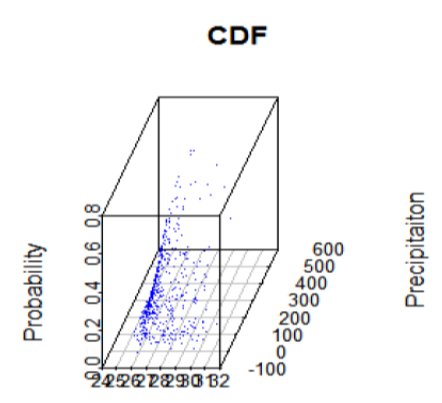


Indian Journal of Science and Technology
Year: 2021, Volume: 14, Issue: 16, Pages: 1274-1282
Original Article
A Rajini1,2*, C Jayalakshmi3
1Research Scholar, Department of Statistics, Osmania University, Hyderabad, 500007, India
2Assistant Professor, Bhavan’s Vivekananda College of Science, Humanities and Commerce,
Sainikpuri, Secunderabad, 500094, India
3Professor, Department of Statistics, Osmania University, Hyderabad, 500007, India
*Corresponding Author
Email: [email protected]
Received Date:10 March 2021, Accepted Date:22 April 2021, Published Date:07 May 2021
Objective: To analyze the Temperature and Precipitation dependence in Hyderabad and Medak and forecast Temperature. Hyderabad and Medak are districts of Telangana State, which is a Plateau region and Hyderabad is chosen as it is a thickly populated area whereas Medak is the nearest district to Hyderabad, which has relatively less population. Methods and Statistical analysis: The data is collected from the Indian Meteorological Department,Pune from 1901 to 2019. Data from 1901 to 1996 used for training and 1997 to 2019 data used for testing. Modeling is done keeping in view the deep association between Temperature and Precipitation, through Copula analysis. The Mean Absolute Percentage Error (MAPE) for the best model in Hyderabad and Medak are found to be 0.04 and 0.09 respectively. R- Software and IBM SPSS statistics version 25 were used to analyze the data and interpret the results. Findings: The best Copula need not be necessarily the same for different data sets. We could find the best Copula for Hyderabad as Rotated Gumbel 270 Copula and for Medak, Frank Copula based on AIC and BIC criteria. The simulated data of Temperature showed a very close agreement with testing data, which can be seen in [Figure 5 (a) & (b)]. Novelty: This type of analysis and model fitting is not found in the literature for Hyderabad and Medak and these districts are in Telangana, the Plateau region. Our fitted models can give a good prediction of Temperature in this region.
Keywords: Temperature; Precipitation; Normal distribution; Rotated Gumbel 270 Copula and Frank Copula
© 2021 Rajini & Jayalakshmi.This is an open-access article distributed under the terms of the Creative Commons Attribution License, which permits unrestricted use, distribution, and reproduction in any medium, provided the original author and source are credited. Published By Indian Society for Education and Environment (iSee)
Subscribe now for latest articles and news.